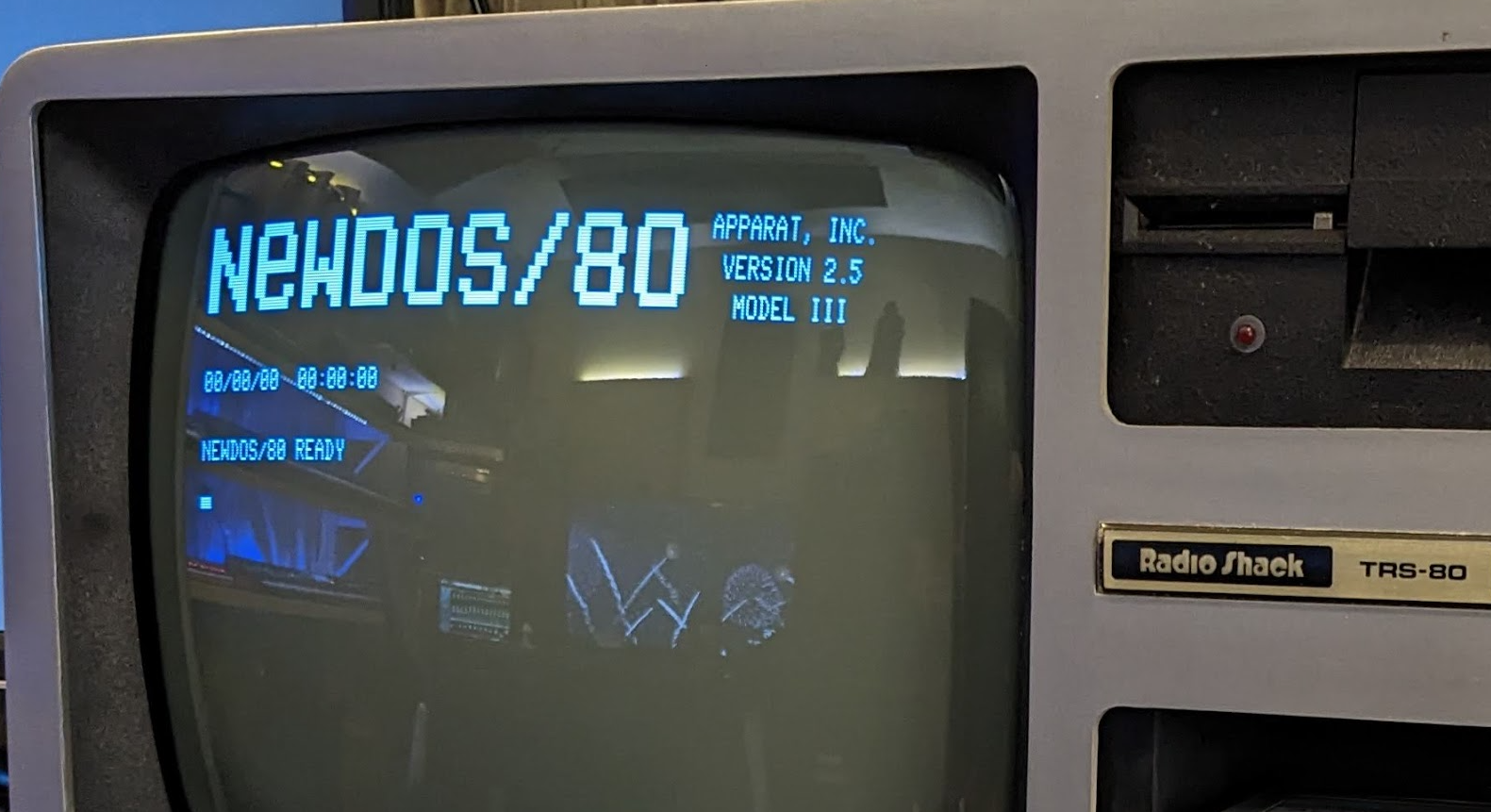The TRS-80 Revival, Part I - From the Dead
In part one, I bring a TRS-80 Model III back from the dead. Things explode.


My first computer, in 1980, was a TRS-80 Model III. My dad bought it immediately when it was released, with a 2MHz Z-80 CPU and 16K of RAM. It had no disks, and no ability to communicate with other machines. Software was loaded and saved on cassette tapes with a tape recorder, and I absolutely loved it.
That machine was incrementally upgraded over the years with a full 48K of RAM, a disk controller card, four floppy drives of various formats, and a RS-232 serial card. I bought a used 300 baud acoustic-coupled modem, which opened up the world of BBSes and other 'online' activities. After getting my amateur radio license, I also used that machine to get on the air via Packet Radio.
I no longer have that particular machine, but I did acquire another during the 1990s. This machine sat unused in my basement for decades before I pulled it out in late 2022, and naturally, it didn't work. These are the chronicles of its revival.
December 26, 2022

One of the first things I noticed before cracking it open, beyond the lack of any signs of life, was that the brightness and contrast controls were seized. From what I read, this was a fairly common thing to happen over time.

I decided to squirt them full of WD-40 and let them soak overnight while I turned my attention to checking the power supplies. A Model III with floppy drives has two identical 35W power supply boards: One for the mainboard and CRT, and a second for the disk controller board and internal drives.

The wiring here is obviously not factory, so I'm sure that this machine was scrabbled together from parts of other machines. I don't recall if it was done by someone else, or 1990s me. I applied power and began checking the nearest power supply, the one for the disk subsystem.

With that supply verified, I moved on to the one in the rear, the one which powers the mainboard and monitor.

No voltages on any of the outputs. That's definitely an issue. I was live-posting this process on Mastodon as it was happening, and as I was posting, this power supply exploded, releasing Magic Smoke into the room.

The source of the noise, smoke, and smell turned out to be one of the infamous "RIFA" line capacitors. These capacitors have a reputation for developing hairline cracks in their shell as they age, allowing moisture to enter. Eventually the dielectric material separating the plates breaks down, and since these are across the 120v AC line... BOOM. These capacitors should be replaced on sight with modern polypropylene devices.
December 27, 2022

I decided to install the working power supply on the back wall, so I could power up the mainboard and monitor, giving me an overview of what else was functional. After completing this, I also discovered that the WD-40 had loosened up the brightness/contrast controls overnight. I reconnected the monitor board and applied power.

This was promising. There is some sort of horizontal sync problem, but I'm fairly sure that what we see here are the machine's startup messages.

After use of a long-lost troubleshooting method known as "wiggle things," the ancient texts are revealed!

I replaced the burnt RIFA capacitor with a polypropylene unit scavenged from an old PC power supply, and continued troubleshooting. I replaced C7, and while the supply provided output voltage afterwards, it was unstable. The switching power supply has always been my nemesis. My patience with this quickly evaporated, and I decided to put it aside for later, and move on.

I had a similarly-sized power supply module in my junk box, which had the appropriate +5v, +12v, and -12v outputs, so I grafted on some pigtails appropriate for connecting to the TRS-80's internal power wiring.

While I was at it, I also whipped up a new drive power harness, to give me a bit more flexibility in routing. The existing harness was just barely long enough.

After ensuring that the power for the disk subsystem was now good, I immediately proceeded to break the latch on the drive door, so I was forced to stop, disassemble it, and repair a groove which held a pin in place. I forgot to photograph any of this, but I added a dab of epoxy to keep the pin from popping free. It appeared to be related to wear, so I'm betting that it is a common problem with these Tandon drives.

Having tested and mounted the new supply, it was time to see if any of my disks from the 1980s were still readable.

What's 40 years old and just booted from a 40 year-old floppy disk? THIS THING!
This concludes part I. Please check here for Part II!

